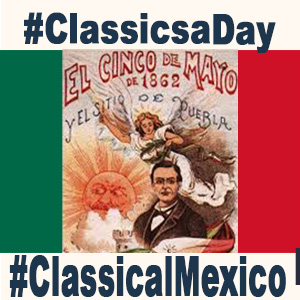
#ClassicsaDay #ClassicalMexico Week 4, 2024
By Ralph Graves
Mexico has a long classical music tradition, extending back to the late 1500s. Composers emigrated from Spain to supply the great Mexican cathedrals with music. Within a generation, native-born composers assumed those roles.
The Classics a Day team realizes that Cinco de Mayo is more of an American than a Mexican holiday. But it is an opportunity to celebrate Mexican culture. And so, the challenge for May is to post examples of Mexican classical music on your social media platforms.
Right from the beginning the traditional music of the native population influenced the classical composers. As a result, Mexican classical music has become a natural expression of the national character.
Here are my selections for the fourth week of #ClassicalMexico.
05/20/24 Eduardo Hernández Moncada (1899–1995): Costeña
Moncada was active as a pianist, conductor, and composer. His goal was to blend traditional folk music with classical forms.
05/21/24 Gabriela Ortiz (1964): Kauyumari
Ortiz is the daughter of folk musicians. She holds several advanced music degrees and combines folk and rock traditions into her work.
05/22/24 José Mariano Elízaga (1786–1842): Dúo de las Siete Palabras
Elizaga was the foremost composer in Mexico in the early 1800s. He was also the Kapellmeister for Emporer Augstin I of Mexico.
05/23/24 José Antonio Gómez y Olguín (1805-1876): Te Deum para solistas, coro y orquesta
Gómez spent most of his professional life at the Mexican City Cathedral. He began as third organist and eventually became its music director.
05/24/24 Gustavo Campa (1863–1934): Three Miniatures for String Quartet
Campa was a major influence in Mexican Classical Music. He was among the first Mexican composers to embrace Debussy and the Impressionist style of composition.


